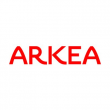Europe’s unsettling times
 The Target2-Securities (T2S) go-live in Italy on 31 August was the sternest test to date for the European Central Bank’s (ECB’s) settlement platform and its participants. Prior to that the four central securities depositories (CSDs) from Greece, Malta, Romania and Switzerland had gone live on the platform at the end of June.
The Target2-Securities (T2S) go-live in Italy on 31 August was the sternest test to date for the European Central Bank’s (ECB’s) settlement platform and its participants. Prior to that the four central securities depositories (CSDs) from Greece, Malta, Romania and Switzerland had gone live on the platform at the end of June.
James Woods, head of client development for banks and brokers at BNP Paribas Securities Services Italy, says the migration to T2S in Italy was “a massive undertaking”, involving BNP Paribas teams in Milan, Paris and Lisbon. As a directly connected party (DCP) to T2S, BNP Paribas Securities Services in Milan has migrated more than 60,000 positions, accounting for a quarter of the total positions migrated to the platform in Italy. The bank has processed nearly half a million settlements on T2S since the launch.
At the official launch of T2S in early July (Italy was given extra time as it was felt the original schedule did not allow for adequate testing) Mario Draghi, president of the ECB, said T2S was a “central part of the broader story of European integration”. Other elements include Target2, the real time gross settlement system for euro payments that was launched in May 2008 and is now one of the largest payment systems in the world, with a 2014 turnover of €492 trillion. He believes T2S will match the accomplishments that have been made on the cash side.
“Thanks to T2S, Europe now has an integrated platform for settling securities transactions in central bank money in real time,” he said. “Cross-border settlement of both debt securities and equities is now treated in the same way as domestic settlement, with harmonised conditions, making it easier and more cost-effective for investors and companies to buy and sell shares in other countries, for example.” Moreover, issuances, which have so far been largely restricted to the national level, are now available on a European scale, making it easier to attract foreign investors.
However, the “end of the T2S story remains unwritten”, said Draghi. He pointed up areas that required greater harmonisation if a fully integrated financial sector in Europe were to be achieved. This could be addressed, he said, via the ongoing development of a European Capital Markets Union (CMU). The Union would be supported by two main pillars: greater risk-sharing and more diverse sources of financing. Greater integration of capital markets, he said, would enable Europe to better deal with future economic shocks. A CMU also would enable businesses to enjoy a greater range of funding choices and help reduce the link between a firm’s location and its cost of funding. “In Europe, the share of financing obtained in capital markets stands at 25 per cent, whereas this figure is 80 per cent in the US. Cross-border frictions also impede the ability of firms to gain access to financing from across the European Union. By removing fragmentation in capital markets, CMU will allow businesses and households to access a larger variety of funds and stimulate growth.”
Draghi said T2S would be the foundation for the establishment of a CMU. T2S will facilitate cross-border bonds and equities trading, which means that the market is already making progress towards completing the CMU. Moreover, as part of its harmonisation agenda, T2S has taken steps towards many of the goals in the CMU agenda, such as harmonising withholding tax procedures and resolving conflicts of law. “In this sense, T2S is a demonstration of the market’s willingness to achieve deeper integration on a European scale,” he said.
The visions for T2S are grand and far-reaching, but for the present most market participants are focused on very technical details. Tom Casteleyn, head of T2S and market infrastructures, BNY Mellon Asset Servicing, says “a lot of learning is going on”. Since the migration of the Italian market, firms are focused on how the system works in reality and how market practice is developing. Like BNP Paribas Securities Services, BNY Mellon has become a DCP in Italy.
Casteleyn agrees with Draghi that much more needs to be done on corporate actions, tax and registration requirements for Europe’s capital markets to become fully harmonised. “These issues are on the radar, but it’s likely we will have to wait until after the full migration before we see how much progress will be made in these areas.”
Mathias Papenfuß, chief operating officer, member of the Clearstream Executive Board, says there was a “huge effort behind” the Italy migration and considering the large scope of the project and the number of participants, the migration period went rather smoothly. “T2S is obviously a huge, revolutionary project with many parties involved and it has its share of challenges like all big projects have,” he says. “One explicit lesson learned is that the adaptation of standing settlement instructions [SSI] is an important element to ensure market participant readiness.”
Alan Cameron, head of relationship management for international banks and brokers, BNP Paribas Securities Services, says the advantages of T2S will be “cumulative”. The bank has learned many lessons during the Italian market migration that will stand it in good stead for subsequent migration waves. “We feel confident about the next wave of migration,” he says. Cameron adds that a small group of the bank’s larger clients are considering whether to take more control of their own settlement, but will still require agent banks to provide asset servicing. “We are adapting our processes to allow customers to take control of settlement. Our sponsored access model will allow that and is a structural change to our business model in Europe.” Cameron says most of the bank’s customers have made, or are getting ready to make, T2S-related decisions. “I think we are looking at years of consolidation coming up. Once we have connected with all of the markets, being a DCP will give us efficiency and economies of scale, enabling us to streamline processes and push costs down.”
While many market participants are still mulling over their T2S strategies, CSDs have not had such a luxury. With euro settlement transferred on to a central platform, Europe’s CSDs have had some significant changes to make to their IT infrastructures.
T2S will be a powerful accelerator of innovation and harmonisation of CSD services in Europe, says Papenfuß. “CSDs that have already diversified beyond traditional settlement, asset servicing and notary services will find it easier to deliver a new value proposition to clients.”
Clearstream, via its One Clearstream integrated offering combines the benefits of its CSD and ICSD services, for example a wider range of issuer services or collateral management support. Customers will be able to rationalise the many market access points they use today and concentrate their operations. Papenfuß says the offering will enable customers to reap all benefits of T2S, notably in reducing their network costs as well as their costs of capital and collateral management.
Euroclear sees T2S as providing “opportunity and flexibility”, says Paul Symons, head of government relations at Euroclear. T2S will enable users to centralise their assets into a single CSD within the eurozone and have a single cash pool with the central bank of their choice.
Multiple T2S options will be available to Euroclear customers. Customers may continue to use Euroclear Bank as the access point for Europe and worldwide. This is particularly suitable for global players and those outside Europe, who may choose to use the ICSD to access European markets. Others may decide to access one or more EU markets via a single CSD. Northern Trust has opted for a slight variance to this model using Euroclear for single access through Eses for the large European markets but will use an agent bank for asset servicing. Finally, there is the option to have direct access to the issuer CSD but with accounts operated by Euroclear Bank, which can manage asset servicing.
This is an “extraordinary range of opportunities”, says Symons. He adds that in the early days of T2S’ development Euroclear’s customers made it clear they didn’t want to be compelled to choose one particular route to access settlement.
Central counterparty EuroCCP will be a DCP for each individual CSD as it joins T2S. Chief executive Diana Chan says this decision was made because “unless we are a directly connected party, we cannot easily use some of the features of T2S that will make settlement more efficient”. Becoming a DCP in multiple markets has been a big investment, she adds, but is worth it because it will enable EuroCCP to differentiate its services.
Among the important features of T2S, says Chan, is auto-partialling, whereby partial fulfilment of deliveries can be made, with the remainder automatically delivered to ensure higher settlement rates. The operational efficiencies delivered by auto-partialling have provided a reduction in overnight funding requirements, which has been well received by EuroCCP clients trading the Italian market. T2S will also level the playing field for EuroCCP, putting it on par with other CCPs in terms of settlement priority. In some markets, domestic CCPs have been given settlement priority.
One of the main talking points in the early days of T2S was the idea that the platform would usher in an era of CSD consolidation. This hasn’t yet happened but is still a probability. Thomas Zeeb, chief executive of SIX Securities Services, says once more participants are on the T2S platform CSD consolidation will accelerate. “Looking forward, we believe the T2S platform will lead to greater integration within Europe because it will pull liquidity into the centre and lead to further consolidation,” he says. “The smaller CSDs will find it difficult to justify doing settlement as well as notary functions when their clients can settle through a central hub. Most banks are likely to opt for only one T2S interface.”
For the large and sophisticated CSDs, T2S is “a good thing”, says Tony Freeman, head of global industry relations at Omgeo. “The bigger CSDs are now looking at T2S, how to work with it and derive benefit from it. These CSDs have the budget and spread of business to ensure that T2S will have minimal impact on settlement revenues. It is the smaller CSDs in the market for whom T2S will have the greatest impact.”
The much discussed prospect of consolidation of CSDs has not yet materialised. One reason for this, says Freeman, is that CSDs represent a core part of a country’s financial infrastructure and giving that up to a third party may present challenges. He believes the smaller CSDs may platform share. “I think there will be alliances whereby the CSD retains its name and national identity but will be using another entity’s technology and operations. This will help CSDs to service their customers but keep their costs down.”
Clearstream’s Papenfuß also thinks there will be collaboration between CSDs. At some point all European CSDs will have equal access to T2S and will therefore compete on the services they provide, he says. In addition, changes required by regulatory measures such as the EU’s CSD Regulation will make it even harder for smaller CSDs to compete. “Those with a narrower business scope will need to develop their service range to counterbalance the loss of their settlement franchise. But before we see consolidation, I would expect more collaboration between CSDs in the short to medium term as they search for a cost-effective approach to broadening their service offering.”
Elizabeth Maiellano, head of global proxy product development investor communications solutions at Broadridge, says several CSDs are adopting specialist asset servicing strategies and moving to a business model that emphasises collaboration with other CSDs and outside service providers.
Zeeb thinks the crunch time will come after 2018, when T2S is fully bedded down. “The market will have to deal with the question of consolidation and whether it is worth keeping certain national CSDs going. I think there will be a lot of resistance to letting go of these infrastructures. But holding on to them may no longer be financially viable. Some CSDs may look to pool their resources, but this will happen only after T2S is fully rolled out.”
Symons believes the questions of smaller CSDs will not be resolved until after T2S is bedded down. “It will be a challenge for many CSDs to build successful and credible asset servicing packages that are attractive to customers. Such services are already handled very well by agent banks and international CSDs











































